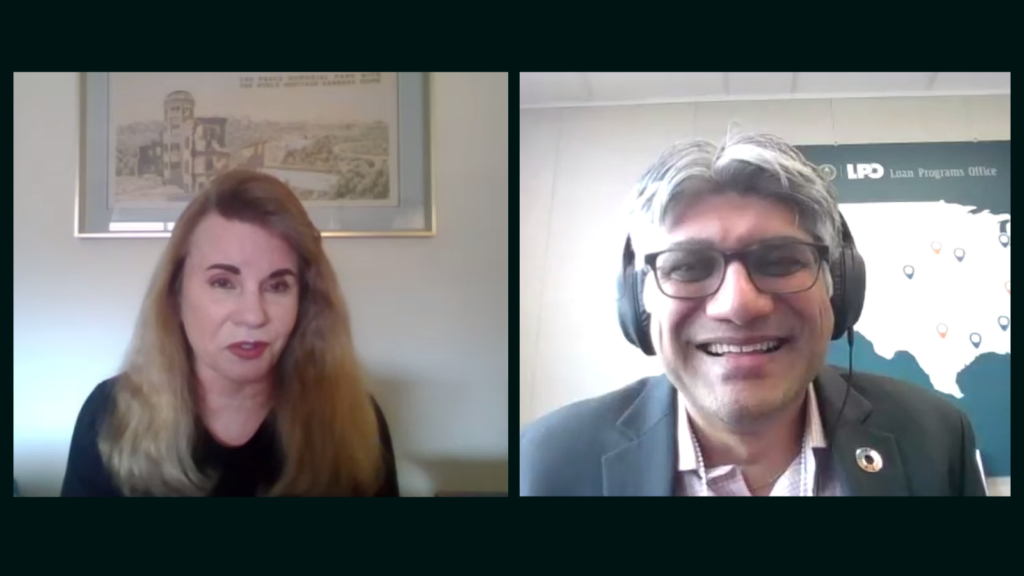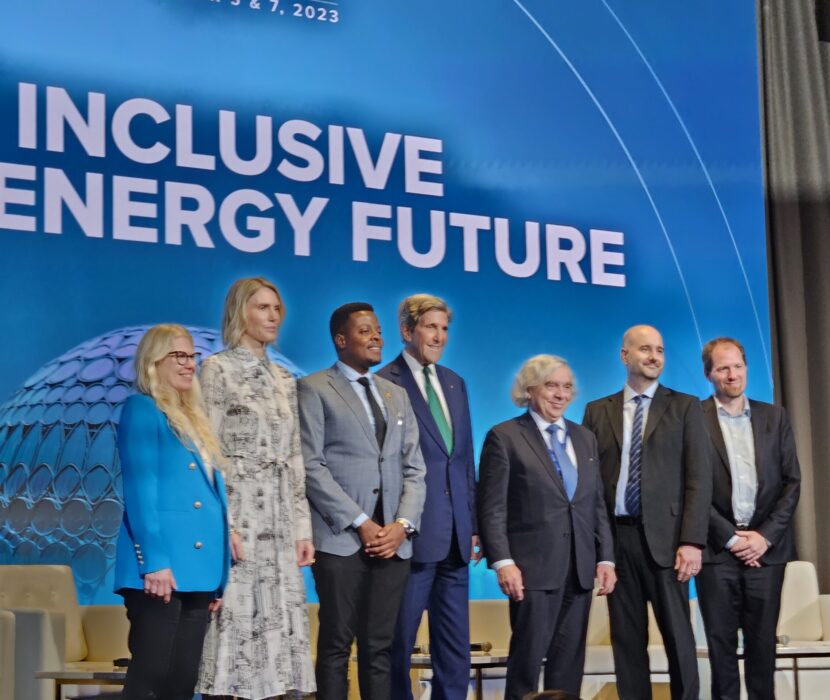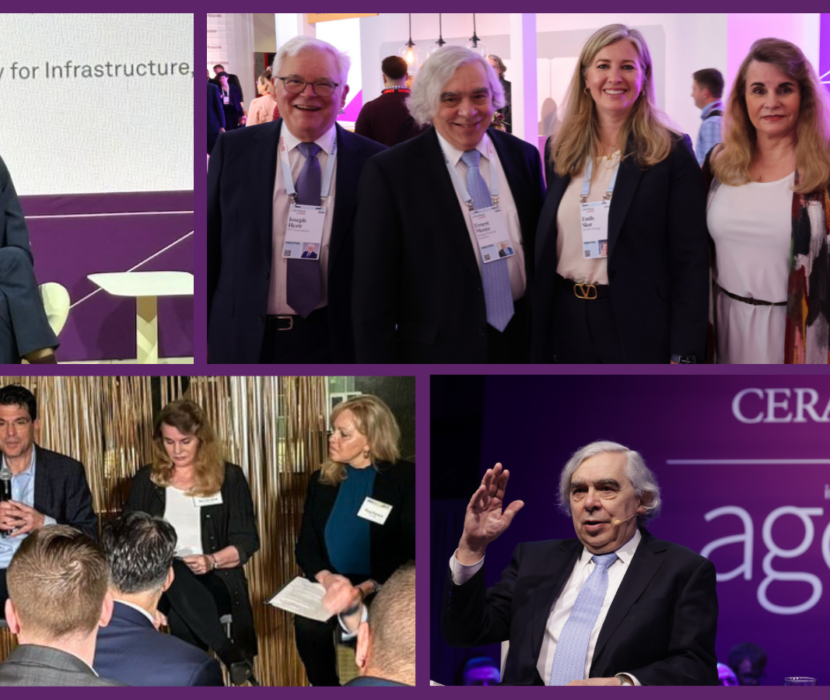
On March 13, 2024, EFI Foundation Executive Vice President Melanie Kenderdine and Jigar Shah, director of the Loan Programs Office (LPO) at the U.S. Department of Energy, had a conversation at an OurEnergyPolicy webinar about how the United States can prepare for an expected surge in electricity demand.
Kenderdine and Shah began by discussing the role of LPO in federal climate investments and then moved on to focus on ways that growth in electricity demand could pose a challenge to meeting the U.S. goal of net-zero carbon dioxide emissions by midcentury.
The webinar also featured a conversation between OurEnergyPolicy President Bill Squadron and Phil Kangas, LPO director of outreach and business development, on LPO’s community engagement and outreach efforts.
According to forecast cited in a forthcoming EFI Foundation report, the pace of load growth could double or triple over the next five years. Shah explained that after two decades with no load growth, this anticipated surge in demand has left many utilities scrambling to find ways to both provide enough electricity and meet their climate goals.
Kenderdine and Shah discussed how utilities would need to use more clean energy to meet anticipated demand. They highlighted how unused oil rigs could be repurposed for clean energy sources, such as geothermal power or natural hydrogen.
“We can be looking at a lot of different ways [to] translate the skills of our conventional oil and gas workforce into clean energy,” Kenderdine said. “The knowledge of the subsurface is by far and large held by the oil and gas industry. Using that and developing training programs would be very helpful for the clean energy transition.”
Kenderdine said that current efforts to innovate may be limited by an outdated electricity market structure.
“We [in the Clinton administration] debated the current electricity market structure in 1998,” Kenderdine said. “Think about everything … that’s happened since 1998. I really think it’s time to revisit the market structure.”
Kenderdine explained that updates to the electricity market structure will only become more urgent as more data centers come online. She said that the number of data centers will likely double from 1,850 in the United States today to 3,700 in five years, creating a “huge demand for electricity and infrastructure.”
– Georgia Lyon, Communications Associate
(Share this post with others.)




